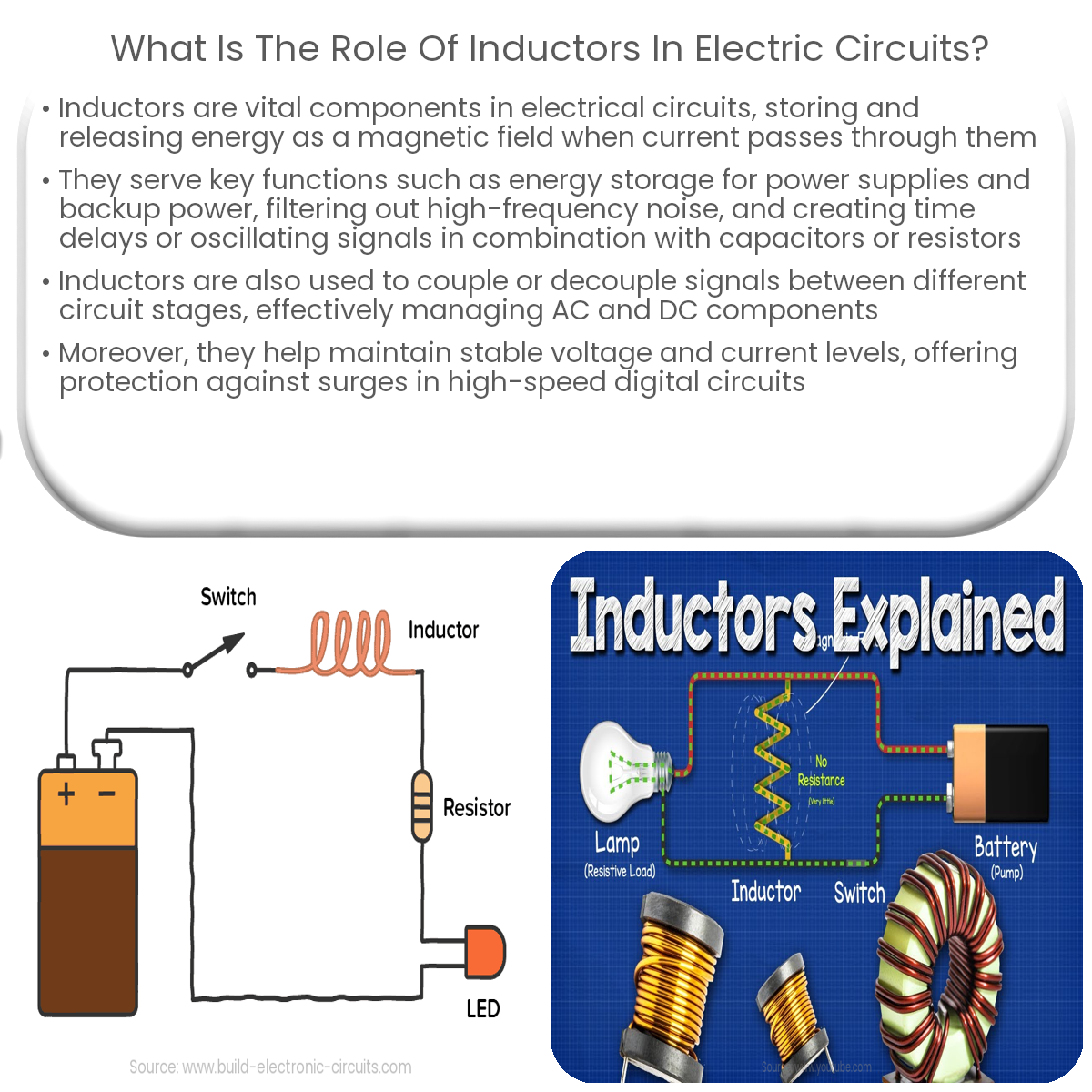Inductors play a key role in electric circuits by storing energy, filtering signals, creating timing functions, coupling/decoupling signals, and stabilizing voltage and current levels.
The Role of Inductors in Electric Circuits
Inductors are essential components in electrical and electronic circuits. They are passive devices that consist of a coil of wire wound around a core, typically made of magnetic material. Inductors store and release electrical energy in the form of a magnetic field when current flows through the coil. In this article, we will discuss the key roles that inductors play in electric circuits.
Energy Storage
One of the primary functions of inductors is to store electrical energy in the form of a magnetic field. When current flows through the coil, a magnetic field is generated around it, storing energy. This stored energy can be released later when the current is reduced or stopped, making inductors useful in applications such as energy storage, power supplies, and backup power sources.
Filtering and Decoupling
Inductors can be used to filter out specific frequencies in a circuit. They offer high impedance to high-frequency signals while allowing low-frequency signals to pass through, making them ideal for filtering out high-frequency noise and interference. Additionally, inductors can be used as decoupling devices in electronic circuits, isolating different sections of a circuit to prevent interference and improve performance.
Timing and Oscillation
In combination with capacitors or resistors, inductors can form LC (inductor-capacitor) or RL (resistor-inductor) circuits that create time delays or generate oscillating signals. The time constant in an RL circuit is determined by the ratio of inductance to resistance values. These circuits are commonly used in applications such as filters, oscillators, and waveform generators.
Signal Coupling and Decoupling
Inductors can be used to couple or decouple signals between different stages of an electronic circuit. In coupling applications, inductors allow AC (alternating current) signals to pass between stages while blocking DC (direct current) components. In decoupling applications, inductors help separate stages of a circuit to minimize interference and maintain signal integrity.
Voltage and Current Stabilization
Inductors can help stabilize voltage and current levels in a circuit. Their ability to store and release energy in the form of a magnetic field makes them ideal for maintaining stable voltage levels in power supply circuits or buffering current surges in high-speed digital circuits.
In conclusion, inductors play a critical role in electric circuits by storing energy, filtering and decoupling signals, creating timing and oscillation functions, coupling and decoupling signals, and stabilizing voltage and current levels. Their wide range of applications and importance in circuit design make them an indispensable component in electronics.


